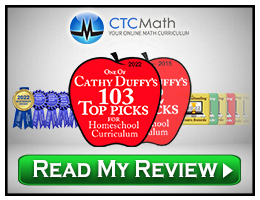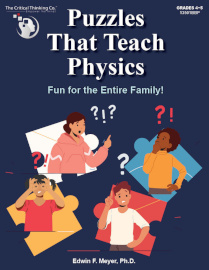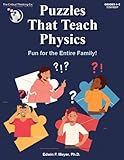Puzzles That Teach Physics begins with an explanation that the author, Dr. Edwin Meyer, observed a need to help college students and adults develop problem-solving skills, so he created a course within a college graduate business program to remedy the problem. It says,
This book contains many of the problems Dr. Meyer uses in his coursework and lectures. The problems are stated simply and require no formal training in physics, mathematics, or engineering, only a base knowledge of how the world works and the ability to reason logically.
Dr. Meyer focuses on physics as the source of problem-solving puzzles. While students need not have taken a physics course, some exposure to principles of physics is helpful.
The publisher recommends the book for fourth grade and above. I’ve taken physics but still found many of the problems difficult to solve, so I think it’s probably best for sixth grade and above. Most of the math is relatively simple, but not all would be familiar to fourth- and fifth-graders. The physics concepts are rarely obvious; they require some thought and maybe some information students haven’t learned.
For instance, the “Blood Pressure” puzzle asks, “If fatty deposits decrease the diameter of the arterial wall by a factor of one-half, by what factor must the blood pressure increase to produce the same flow of blood?” This requires students to calculate the diameters of two “tubes” to determine that it takes four times as much pressure, but that’s not the answer. The hint (always available in upside-down print at the bottom of the puzzle page) tells us that resistance to the flow varies with the speed of the liquid. The speed of flow in the narrower tube needs to increase by a factor of four to equal that of the larger tube, but resistance is also increased by another factor of four. The two four-fold increases mean it takes 16 times as much pressure to maintain the same rate of flow. The resistance issue isn’t one most students would think of but something they need to learn eventually.
Simple illustrations help students visualize each problem, but they might sometimes want to try to re-create a situation to observe for themselves what happens.
The puzzles use all sorts of scenarios, such as tricycle movement, the movement of helium balloons when a car brakes suddenly, roller coaster acceleration, the effect of wind resistance on airplanes, water refraction when bow fishing, pulleys, Band-Aids (What’s the best speed for removal?), baseball throwing, shooting bullets, a boat’s displacement of water, a dog’s pulling strength, the balance point of an industrial broom, gravitational pull on occupants of a space shuttle, musical instrument warm ups, and head-on collisions between football players.
Each puzzle is presented on one page with multiple-choice answers. I mentioned there’s a hint at the bottom of each page, and fully explained solutions are on pages 65-107 of this 108-page book.
Younger students might not grasp all the physics concepts or math involved in the solutions, but the author does a good job of translating the explanations into everyday language.
The book is available in print or as a PDF. The publisher’s website has a sample page of the first puzzle, but, unfortunately, you don’t get the solution.
Summary
Puzzles That Teach Physics can be used as part of a science course, for critical thinking practice, or as the subtitle says, as “Fun for the Entire Family!”
Some students might like figuring these out on their own, but I suspect that most will prefer working with a few others to share thoughts, ideas, and sometimes their own simulations.









